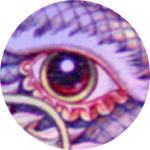
Originally Posted by
Tainan Mantis

Thanks, I just ordered this book.
His fame comes from Daoxun in a book from 667. I would like to know more about that book.
DO you happen to know the name of it?
Several of my sources that refer to Daoxuan and his writings do not mention the title by name because it is not among his more notable works. I did some checking with various scholars, and Prof. Koichi Shinohara of Yale tells me that it is mentioned in:
Daoxuan, 道宣律師感通錄 (Vinaya Master Daoxuan’s Record of Miraculous Responses), T. 2106
Empty Cup contacted me earlier about him wanting to research the history of his particular Shaolin style. He asked what tools I used in the course of my own projects. I directed him to Prof. Meir Shahar’s book for a broad overview of Shaolin history. However, the best advice that I can give to him and other like-minded people is this: never be afraid to contact professional scholars. I have found that they are more than willing to provide help to budding scholars. I have never met Prof. Shinohara before, but he was gracious enough to take time from his research in India to lend a hand. He is one of many scholars that I have contacted over the years.
Just in case anyone else is interested, I stumbled upon a free pdf of Prof. Shahar’s book on Shaolin. It loads slowly, but it is good to have on a computer if you don’t have access to the physical book:
http://korat.ibc.ac.th/files/private...ial%20Arts.pdf




 Reply With Quote
Reply With Quote



